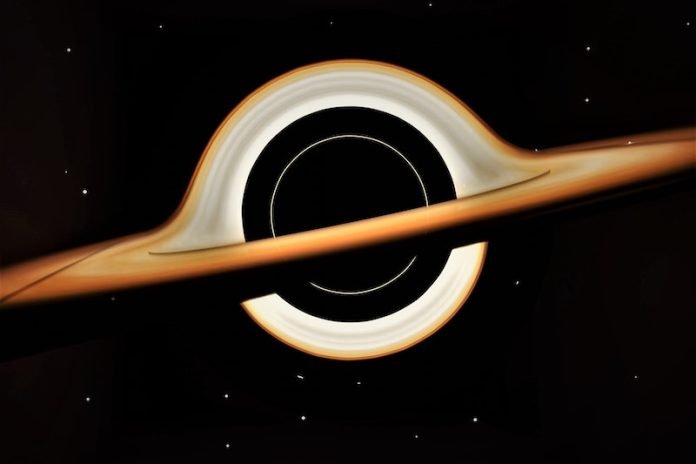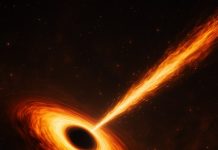
You know how space movies always show black holes as these scary, all-consuming monsters?
Well, scientists have been using a really powerful telescope to look at a part of the sky, and guess what? Those super-duper scary black holes are not as common as we thought.
This is pretty big news and gives us a fresh perspective on our universe.
The Telescope and the Lady Behind the Lens
Allison Kirkpatrick, a teacher and researcher at the University of Kansas, led this project. She used the James Webb Space Telescope, which is like the superhero of telescopes, way more powerful than anything before.
They were focusing on a part of the sky that’s been looked at many times but never with this new telescope’s super eyesight.
Allison wanted to find out what was going on with galaxies like ours a really long time ago, like 7 to 10 billion years back.
She especially wanted to find black holes that are in the middle of sucking in a lot of stuff (scientists call these ‘active galactic nuclei’ or AGN for short).
What Did They Find?
Less Drama at the Center
The big surprise was that there were fewer of these AGN black holes than expected.
This is kind of like going to a party expecting a lot of loud music and dancing, only to find out it’s a quiet tea party. So, the universe might actually be a bit more calm and stable than we thought.
Ordinary Black Holes Are Just Chillin’
Every galaxy, including ours, has a black hole in the middle. But most are not drama queens like the AGN ones. They’re just sitting there, not growing quickly or messing with their surrounding galaxies.
This makes us wonder how the black hole at the center of our own galaxy is behaving. If it’s more like these “chill” black holes, then it was probably never an AGN-type, ever.
Not Much Dust in the Wind
Another surprise was about dust. Now, dust in space isn’t like the dust under your bed; it’s more like tiny pieces of rock and ice. In really big galaxies, you find lots of it.
Allison thought the smaller ones would also have lots of dust, but they didn’t. This makes us rethink how galaxies, even the size of our Milky Way, grow and change over time.
So What’s Next?
Allison is already gearing up for another, even bigger study. The first study looked at around 400 galaxies, but the next one will look at about 5,000!
She’ll use the same super telescope and will focus on the same part of the sky to dig deeper into these new questions. The study will happen in early 2024, and who knows what else she might find?
The Big Picture: Why Does It Matter?
Okay, so no AGN black holes coming to eat us up, that’s good. But there’s more. This study makes us rethink how black holes grow and affect their galaxies.
If most black holes are the quiet, non-dramatic type, then they’re not likely causing much change in their galaxies.
This also means that we have to think differently about how our own Milky Way galaxy grew up. Pretty cool, right?
In a nutshell, this new look at the universe is making scientists scratch their heads and reevaluate some old ideas.
And that’s what science is all about—keep asking questions and be ready to get surprised by the answers.
The study was published in arXiv.



